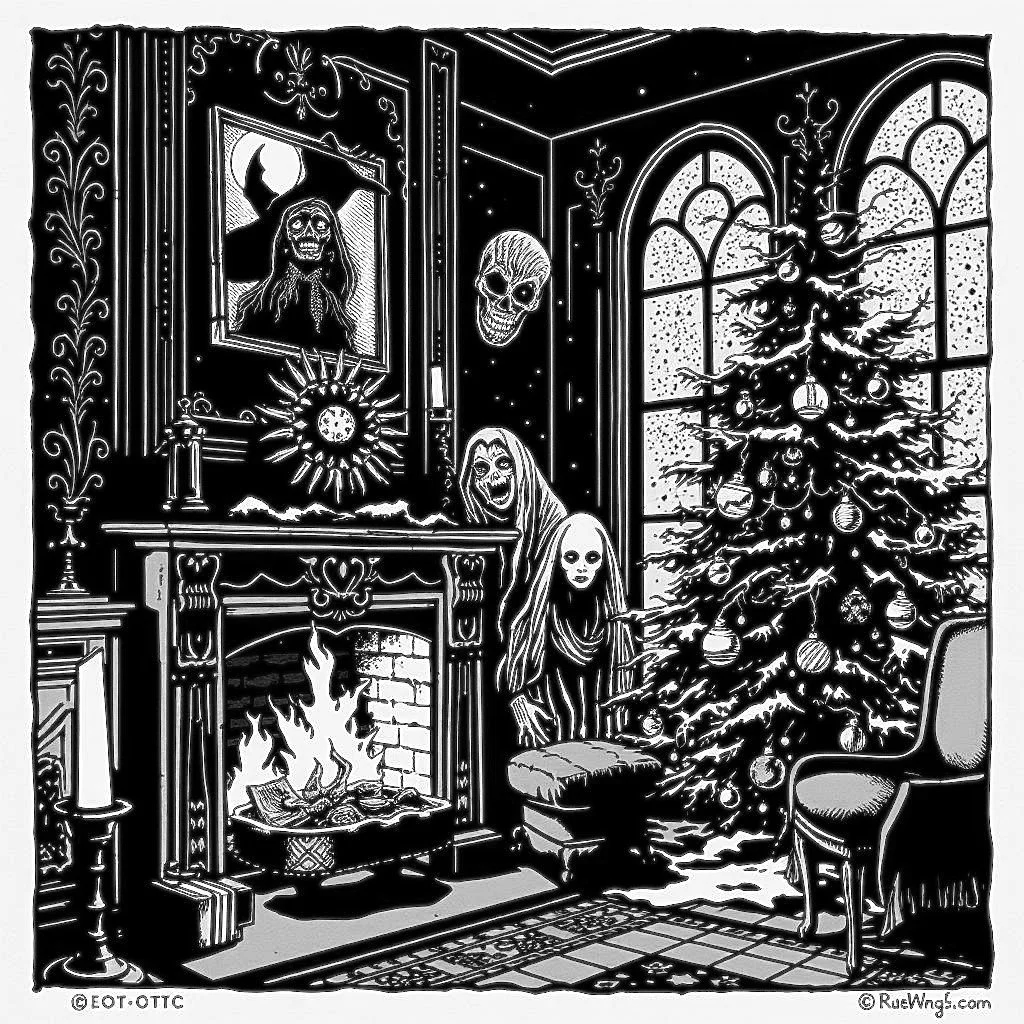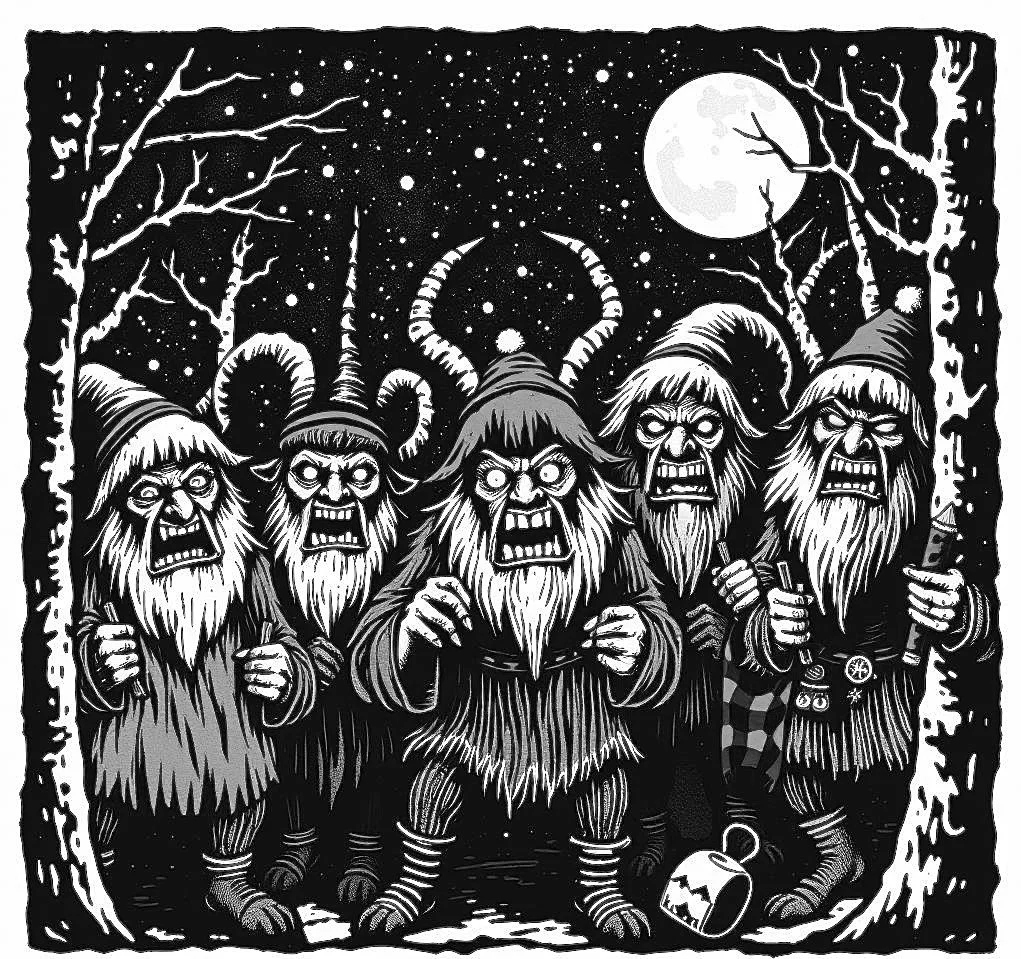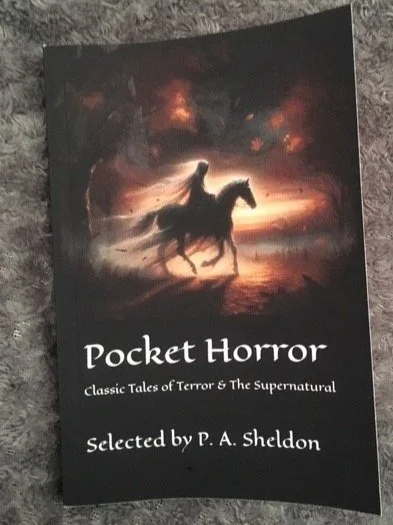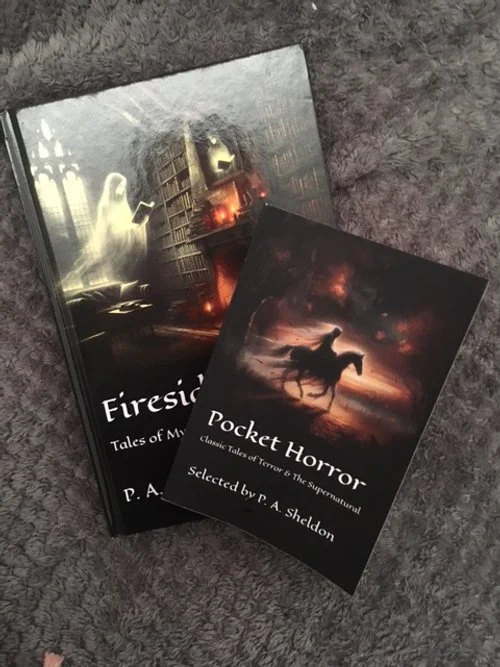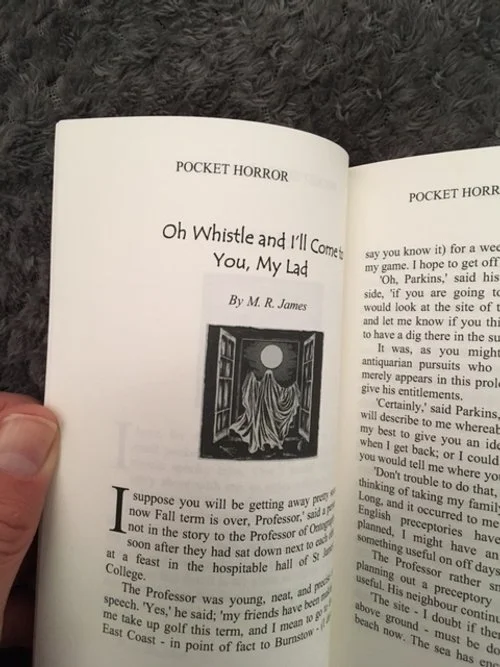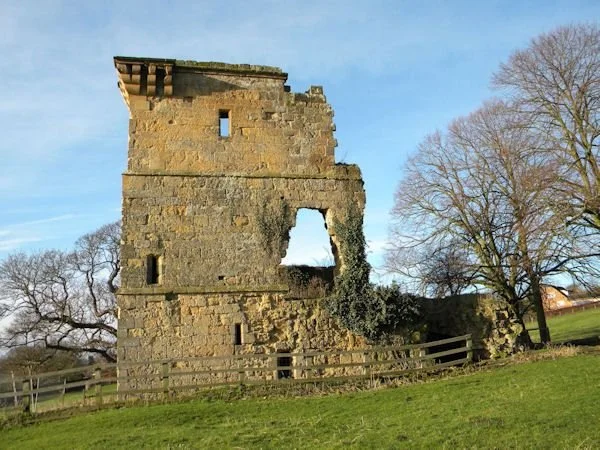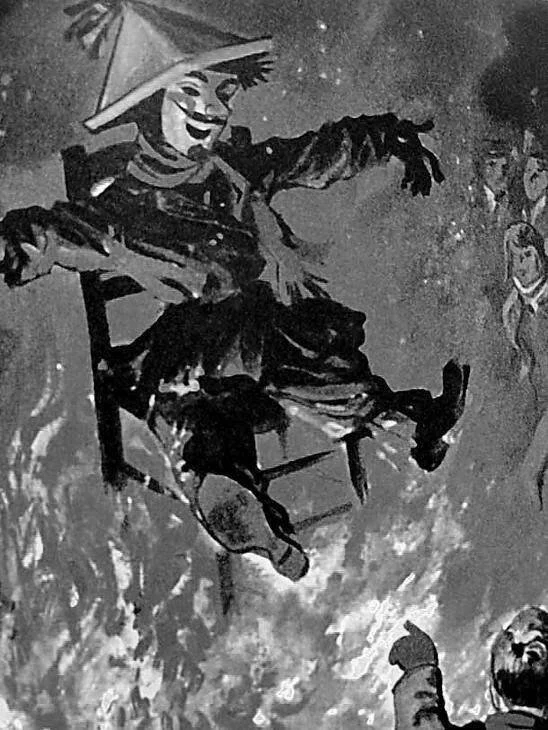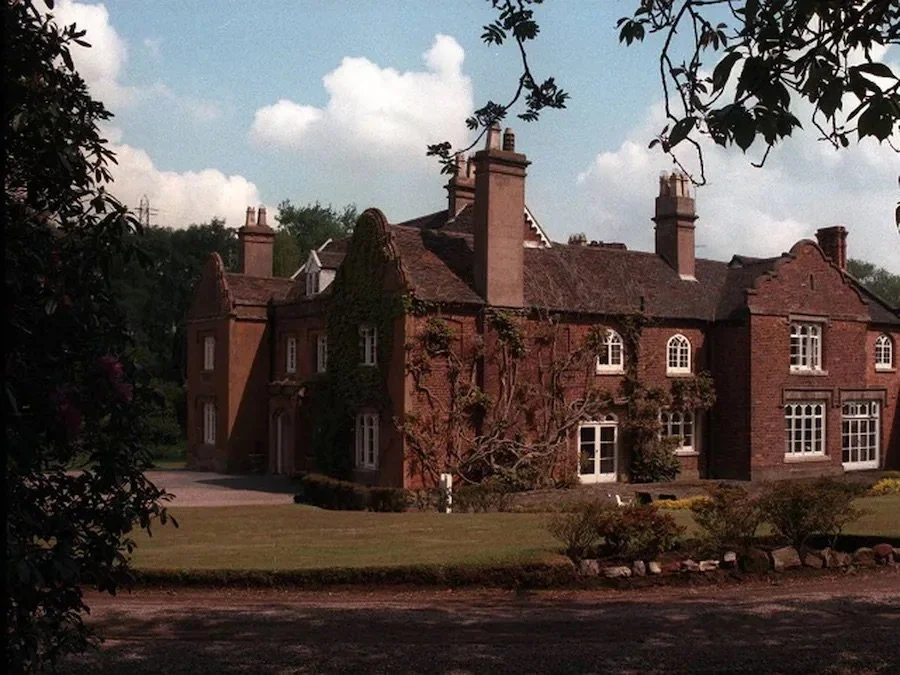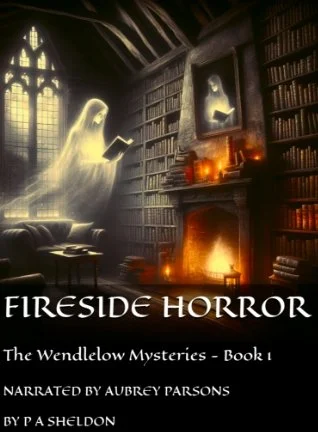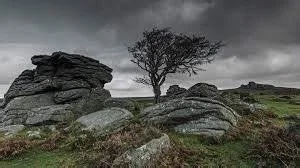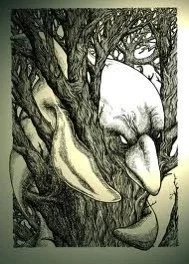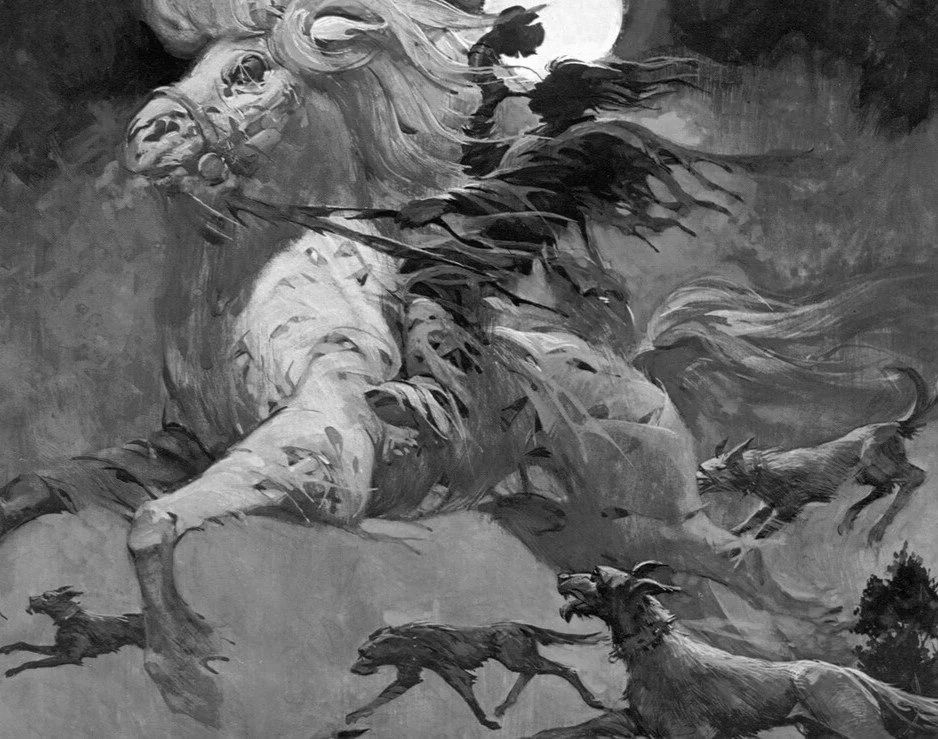A Ghost Story for Christmas - A Free EBook
Merry Christmas
The promise of Christmas shines through the cold winter days, like a beacon of hope in this dark season. It is a time for the giving of gifts to friends and family and so - in this spirit - I have made one of my stories available to download for free.
The short story ‘Fireside Horror’ is a Christmas tale, the perfect story to read on a dreary afternoon, with a warm drink steaming by your side, and a pleasing fire casting its ruddy glow about the room.
Please enjoy this story by clicking the link below, and if you would like more free stuff please visit the DOWNLOADS section of my website. If you are interested in purchasing any of my books please visiting my SHOP.
Have a very merry, spooky Christmas my friend.
Christmas Folklore - The Chaotic Yule Lads
A Few of the Yule Lads.
Time ticks by, the days slowly pass, drawing us closer to Christmas. Every country has its own traditions and stories associated with the winter season, and Iceland is certainly no exception
Iceland is a Nordic Island nation located between the Arctic Oceans and the North Atlantic. It is geologically active, with many volcanoes, as well as having a subarctic coast with glaciers. It has therefore been described as ‘The land of fire and ice.’ There are many Icelandic festive myths, but today we will discuss the unusual legend of the Yule Lads.
Also known as Yuletide-lads or Yulemen, they are a group of thirteen, rascally, pranksters that harass the population over the Christmas period. They arrive one by one over the course of the Yule period, creating trouble, and scaring the poor Icelandic folk. Children leave their shoes on window sills, hoping that these supernatural beings will leave small gifts inside them. However, if you are a naughty child, you are more likely to receive a rotten potato as punishment.
The Yule Lads are believed to be the sons of Grýla, an Ogress who dwells in the mountains. Early tales portray them in a dark way – as the kidnappers of really naughty youngsters – over time they became less scary and stories focused more around their pranks, so that in modern times, the Yule Lads are more comparable to Santa Claus. They are generally portrayed wearing late-medieval Icelandic clothing but are sometimes shown in the costume traditionally worn by Santa, especially at children's events.
Each Yule Lad arrives individually and stays for thirteen days, starting on 12th December. Once the first Lad departs on Christmas Day, the rest follow suit each day through to 6th January. Below is a list of each of the Lads, their names, descriptions and the date of their arrival and departure:
Name - Stekkjarstaur Translation - Sheepcote Clod Description - Harasses sheep, but is impaired by his stiff peg-legs. Arrives - 12th December Departs - 25th December
Name - Giljagaur Translation - Gully Gawk Description - Hides in gullies, waiting for an opportunity to sneak into the cowshed and steal milk. Arrives - 13th December Departs - 26th December
Name - Stúfur Translation - Stubby Description - Abnormally short. Steals pans for the food baked to the bottoms and brims. Arrives - 14th December Departs - 27th December
Name - Þvörusleikir Translation - Spoon Licker Description - Steals wooden spoons being used for cooking. Extremely thin from malnutrition. Arrives - 15th December Departs - 28th December
Name - Pottaskefill Translation - Pot Scraper Description -Steals pots to scrape out the leftovers. Arrives - 16th December Departs - 29th December
Name - Askasleikir Translation - Bowl Licker Description -Hides under beds awaiting the wooden food bowls placed on the floor. Arrives - 17th December Departs - 30th December
Name - Hurðaskellir Translation - Door Slammer Description - Enjoys slamming doors, especially during the night, waking up the household. Arrives - 18th December Departs - 31st December
Name - Skyrgámur Translation - Skyr Gobbler Description - Has a great affinity for skyr, a regional style of yogurt. Arrives - 19th December Departs - 1st January
Name - Bjúgnakrækir Translation - Sausage Swiper Description - Hides in the rafters and snatches sausages that are being smoked. Arrives - 20th December Departs - 2nd January
Name - Gáttaþefur Translation - Doorway Sniffer Description - Has an abnormally large nose and an acute sense of smell which he uses to locate Leaf Bread. Arrives - 21st December Departs - 3rd January
Name - Gluggagægir Translation - Window Peeper Description - A snoop who looks through windows in search of things to steal. Arrives - 22nd December Departs - 4th January
Name - Ketkrókur Translation - Meat Hook Description - Uses a hook to steal meat. Arrives - 23rd December Departs - 5th January
Name - Kertasníkir Translation - Candle Beggar Description - Follows children to steal their precious candles, made of tallow and thus edible. Arrives - 24th December Departs - 6th January
Thank you for taking the time to read this blog my friend, I hope you found it enjoyable, if you like folktales or scary stories why not try out my Audio book ‘Fireside Horror.’ It is wonderfully narrated by the talented voice actor, Aubrey Parsons, and is the perfect thing to listen to on these cold, dark nights. Link below -
Christmas Folkore - The Scottish Krampus.
Crom Dubh na Nollaig - The dark Christmas spirit.
The nights are longer, the branches of the trees and bushes are glazed with a morning frost. We draw closer to our fires, dreaming of warmer days to come. Years ago before Television or Radio, people would entertain themselves through the dark winters, with tales of terror, stories of ghosts, premonitions, and monstrous entities. All whilst huddled around the hearth, its ruddy glow, driving the brooding shadows back to the corners of the room. Over the coming weeks I will share a few of the traditions and ghost stories that so fascinated and horrified our ancestors.
Islay is known as ‘The Queen of The Hebrides,’ it is the southern most island in that famous Scottish archipelago. A rugged place with many bays and sea lochs, here the winter winds sweep off the Atlantic, ensuring that the folk who dwell there stay indoors as much as possible during the dark season.
Krampus has become a fairly well known cultural icon in the last few years, the subject of movies, books and podcasts throughout the globe. This Alpine demon, this anti Santa, visits naughty children, but where Santa arrives on Christmas Eve, with a jolly ‘Ho, Ho, Ho’ and a belly that looks like it is full of Jelly. Krampus skulks about on 5th December, Krampus Night (Krampusnacht,) scaring badly behaved Austrian children.
But this blog is not about Krampus, much has already been written about that festive scrooge. This blog is about Crom Dubh na Nollaig (translated to the Dark Crooked One of Christmas.) The horrific Scottish cousin of Krampus, a mysterious figure who visits and terrorises the good people of Islay over the festive period. He is said to wander the Island on cold dark nights, especially Christmas Eve, looking for mischievous youngsters.
Crom Dubh na Nollaig , is described as a large man, slightly hunched, clad in tattered tartan robes, with great horns twisting from his head. His arrival was said to be proceeded by a frightful, unearthly, howling wind that came down the chimney. Witness’s describe this noise as sounding like the voices of the damned, crying out in misery and pain.
He would appear at the foot of the child’s bed, a silhouette, outlined by the light of the fire’s embers. He carried with him an aged leather bag, marked with Gaelic symbols. This he opened, showing its contents to his unfortunate victim.
The Child would be found in the morning, cowering in their bed, insisting that they would be good from now on, knowing the terrible fate that would await them should Crom Dubh na Nollaig be forced to return for a second time.
A pretty effective way of keeping the nippers on the straight and narrow. I personally would have been terrified to put a foot out of line had I thought such a monster would pay me a visit.
If you enjoyed this festive folklore, and like ghost stories, and tales of the monstrous, why not check out my book ‘Fireside Horror.’ Its a perfect companion for those chilly evenings, and would make a lovely gift for any friends and family who enjoy the spooky. Link below -
Suffolk Folklore - The Thing From The Hollow.
The Thing from Mother Lumpkins Hole.
In the East of England, five miles from the coast, in the county of Suffolk, lies the village of Middleton. This settlement is close to the marshes, the River Minsmere flows nearby, a beautiful water course that hides a terrible secret beneath its surface.
Mother Lumpkin’s Hole, is a deep hollow in the bed of Minsmere River close to Rackford Bridge, there are lots of stories told about this hole. Allan Jobson’s Suffolk Remembered (1969) has this to say about it, “…according to local rumour, it teems with carp as big as pigs, and pike the size of baby sharks.”
Local folk tell sobering tales to youngsters, to keep them away from this part of the river. They say something strange lurks there, using the hollow as a lair, something that will grab and drown anyone who gets too close. Something they called Mother Lumpkin.
It is open to debate as to exactly what Mother Lumpkin is. Some suggest that she is a water hag like Peg Powler. This being dwells further north in the river Tees. The 19th century folklorist William Henderson described Peg Powler as, “having green hair, and an insatiable desire for human life,” the froth or foam seen floating in parts of the river, is called Peg Powler’s suds. There are also other river Hags, who like to lure men and boys to their doom by disguising themselves as beautiful women and pretending to be in danger.
Still other people claim that the thing in the river hollow is something akin to a Grindylow, a small entity that dwells in marshes and bodies of water, they have scaly skin, a greenish complexion, sharp claws and teeth, and long, wiry arms with lengthy fingers at the end. The name Grindylow is thought to come from ‘Grendel’ a name used in the epic poem ‘Beowulf’
Whatever ‘The Thing in water’ might be, the good people of Middleton still tell the tale of a wagon and horses that vanished into the hole, never to be seen again, and advise visitors to avoid the area.
Next week I will begin a series of ‘Ghostly Folktales for Christmas,’ until then, stay spooky friends.
A Pocket Full of Horror.
Pocket Horror
(Please note ‘Pocket Horror’ is not the sequel to ‘Fireside Horror,’ that book is entitled ‘Threads of Shadow’ and will be released next year.)
I have, for the longest time, wanted to own a small pocket book containing all my favourite classic spooky tales. One I could, with ease, carry about with me, to enjoy wherever I was. Sadly I was never able to find one.
Eventually, I decided to make my own.
All the stories in this little book are in the public domain, and presented to you as originally written, as I do not feel that it is my place to edit the work of the greats. Each story begins with its own original woodcut effect art work.
The book is available buy on Amazon in paperback and Kindle format. Links have been provided at the bottom of the page,
I hope this book will provide you with as much pleasure as I am certain it will give me. Stay spooky.
Stories in this book Include:
Oh, Whistle, and I’ll Come to you, My lad. By M. R. James
Man-sized in Marble . By E. Nesbit
The Ghost Coach. By Amelia B. Edwards
The Open Window. By Saki
The Tomb of Sarah. By F. J. Loring
Uncle Abraham’s Romance. By E. Nesbit
The Legend of Sleepy Hollow. By Washington Irving
The Redcap’s Bloody Rampage.
A Redcap wearing….his red cap.
The Border between England and Scotland was, for a long time, a dangerous place. Controlled by what were essentially crime families in fortified manor houses, who refused to accept the rule of either England or Scotland, and who were constantly skirmishing with each other. This area was also sometimes referred to as the debatable lands, and is marked on the map below in brown.
There is a common misconception that Hadrian’s wall denotes the border between these two countries, but that is not true, this roman relic actually lies wholly within England, with the actual border being to its north, running from Marshall Meadow Bay on the east coast, to the Solway Firth in the West.
It seems inevitable that such a violent region would be home to a race of murderous and evil of goblins known as Redcaps, but sometimes referred to as Powies, Bloody Caps or Redcombs.
The 19th-century folklorist William Henderson describes them thus, "a short, thickset old elf with long prominent teeth, skinny fingers armed with talons like eagles, large eyes of a fiery red colour, grisly hair streaming down his shoulders, iron boots, a pikestaff in his left hand, and (perhaps not surprisingly) a red cap on his head".
They made their home in the ruins of castles, favouring any old building with a particularly wicked or unpleasant history. Travellers deciding to rest in the lair of these bloodthirsty beings should beware, the Redcap would throw stones at his victims and do everything in his power to kill them, if he was successful he would dip his hat in their blood. It was believed that should his bloody headgear every dry out he would die, so he had plenty of incentive to keep up his gruesome rampage.
A Recap could not be overcome by mere human strength. The only means of defence against them was to quote scripture or brandish a crucifix, which would cause the being to vanish in flames leaving only a large tooth behind. Longshot Nelson and the Disjoints, have a very creepy Redcap song that you can enjoy, click the Youtube link below.
Until next time stay spooky my friends.
The Nightmare Nuckelavee
The Nuckelavee, a terrifying Orcadian Myth.
The Orkney Isles, is an archipelago that lies on the North Coast of Scotland. There are seventy islands in all, of which twenty are occupied. The local residents are called Orcadians, and they have many rich traditions and stories.
There is some wonderful archaeology to be discovered on these isles, from the Neolithic settlement of Skara Brae, to Maeshowe passage grave, and The Ring of Brodgar standing stones, all of which are simply dripping with tales and lore. But today we are going to deal with the tale of what one Folklorist, Katharine Briggs, called ‘The Nastiest’ of all the Demons of the Scottish Isles, The Nuckelavee.
The term nuckelavee derives from the Orcadian knoggelvi, which translates to ‘Devil of the Sea.’ This horrible being is a malevolent Sea Demon, with sadly nothing good to redeem it. A entity called ‘The Mither of the Sea’ is said to keep it confined to the ocean during the summer months, but outside this all to brief window, it is free to roam where it pleases.
What form it takes whilst in its dark, salty realm is not clear. But we do have a description of the creature on land, given by a witness called Tammas. This unfortunate islander was walking home one moonlit night when his path drew close to the beach. He became aware of something ahead moving towards him. at first he believed it to be a rider on horseback, but the closer it got, the larger it became, and soon he realised that it was far too big to be a mere man mounted on a steed.
Brave Tammas said he stood his ground, and uttered a prayer. Then the moonlight finally revealed the terrible nature of the thing before him. A horrific melding of man and horse. The beast was skinless, every sinew of muscle and pulsing vein visible. The body of the rider was legless and seemed to grow from the back of his mount. Its arms were long and ended in massive hands. The equine head had an enormous gaping mouth that exuded a pungent, toxic vapour, and a single giant eye, that burned like a flame.
Tammas made the sensible decision and fled. The creature gave chase, but our hero was able to ford a small stream, and so the beast, who could not abide fresh water, was unable to continue pursuit.
Folklorists believe that this bizarre being was used to explain mysterious vanishings and incidents that occurred on those storm battered islands. Orcadian tales are strongly influence by their Celtic and Scandinavian roots, so it is possible the thing has it origins in the story of a mythic creature bought in by Norse settlers, and combined with native tales of the Water Horse.
With such a terrible thing roaming about, it cannot be a surprise to learn that the poor folk of the Orkney Isles, keep themselves locked in doors at night during the dark months.
Here is a song about the Nuckelavee for you to enjoy dear friends, click the link below to listen on youtube.
Ghostly Folklore for Bonfire Night. The Spirit of Holbeche House.
A Bonfire, on which burns the effigy of Guy Fawkes.
The Gunpowder Plot, was an attempt to blow up the Houses of Parliament on the 5th November 1605, when the protestant King James I was in residence, it failed when the gunpowder and the man guarding it, Guy Fawkes, was discovered. Now throughout England, on the anniversary of the event, fire works are detonated, and effigies of Fawkes are burned on bonfires to celebrate the foiling of the attack.
When their actions were discovered the men behind the plot, a small group of provincial English Catholics, took shelter in the West Midlands in the home of Stephen Lyttleton, located close to the village of Kingswinford (originally named, Kings Swine Ford.) The Property was called Holbeche House.
They were in turn discovered when a barrel of gun powder they were attempting to dry out by the fire, caught a spark, and exploded - health and safety gentlemen, please. Drawing the local sheriff and his men to the property, a musket battle ensued, the scars of which can still be found on the walls of the house.
Naturally, the place (now a care home) has a reputation for being haunted, I remember being told, as a boy, that you could hear the ghostly sounds of that final fight yearly on its autumnal anniversary. But the chief spectre of the place is a phantom horseman, said to be the unfortunate servant of Stephen Lyttleton, a man who went by the name Gideon Grove.
When the sheriff arrived to apprehend the plotters. Poor Gideon, innocent of any knowledge of the conspiracy, attempted to flee on horseback, he was chased by some of the sheriffs men, and could well have made good his escape, had he not become bogged down in some marshy woodland close to Himley Hall. It was here that his pursuers caught up with him, and despite pleading his innocence, they shot him dead.
His ghost is said to have terrified many a local cyclist and driver as they make their way along the Bridgnorth Road. Silently galloping past them before, turning towards Himley Hall and vanishing into the woods.
With the 5th November upon us, I have little doubt that he will ride again, galloping those roads and lanes, following that fateful route from house to swamp before disappearing for another year.
I hope you enjoyed this horrific little tale, I will leave you with the famous, Bonfire night poem.
Remember, remember, the 5th of November,
Gunpowder, treason and plot.
I see no reason
Why gunpowder treason
Should ever be forgot.
Guy Fawkes, Guy Fawkes, 'twas his intent
To blow up the King and the Parliament
Three score barrels of powder below
Poor old England to overthrow
By God's providence he was catch'd
With a dark lantern and burning match
Holler boys, holler boys, let the bells ring
Holler boys, holler boys
God save the King!
A Ghostly Folk tale for Halloween - The Haunting of Gibbet Lane.
A Gibbeted Man!
Gibbett lane runs from the small town of Stourbridge in the West Midlands, England, to the village of Kinver. This lonely path did not always bear this name.
Many years ago in 1812 a wealthy farmer from Dunsley Bank, who went by the name of Benjamin Robbins, had been visiting the local market at Stourbridge. He had tarried at an Ale House, The Nags Head, to enjoy its hospitality, whilst there he foolishly boasted about what a profitable day it had been for him. Unfortunately, he was overheard by William Howe, a local joiner who was down on his luck, and who fancied himself the highwayman.
When Ben finally left the public house, it was noted that William followed him shortly afterwards. Benjamin made his way down Fir Tree Lane, when he got about half a mile from his home, he was approached by William, who shot him in the back with a pistol, then stole a fine silver pocket watch and 21 shillings (a decent amount in those days.)
The Farmer must have been a hardy man for he was able to crawl home, where he was tended to by two locals doctors, sadly he lost his battle for life 10 days later.
The gentleman farmers of Kinver and Stourbridge were outraged by this crime and pressured the local magistrate to do something. He called in two Bow Street Runners to investigate the case, eventually they tracked down William Howe and he was imprisoned at Stafford.
There were two main pieces of evidence that saw him convicted of murder. Firstly William was identified by a pawnbroker, as the man who had pawned Bens expensive watch. Secondly it was discovered he owned two pistols.
He was sentenced and hung for his crimes, and then gibbeted from a tree close to the sight of the murder. When someone is gibbeted their dead body is hung in a cage for all too see, a terrifying sight for local travellers. A source of grim mythology for local boys. Ever afterwards the path was known as Gibbet Lane.
Eventually a year later his body was pulled down and his remains supposedly buried beneath the tree on which he hung.
Now Gibbet Lane is a haunted place, travellers report hearing strange noises, or of seeing odd shadows moving behind hedgerows. It was local sport amongst young men in the nearby public houses to dare each other to walk to the Gibbet tree, and see how long they could stand there in the dark. Many a brave fellow returned to the pub, shaking and unwilling to speak of what he had seen.
Here are two of the best reported encounters with this horrific spirit. Firstly, whilst he was gibbeted, two school children came along to have a look at the gruesome remains, one of them shouted up to ask William how he felt. He recieved the eerie response, “cold and clammy”.
Secondly, in the 1940’s a lady was walking along Gibbet Lane on a moonlit evening when she became aware of someone following her. It was, she said, the phantom, his neck stretched, swaying from side to side as if broken . This terrifying spirit only vanished upon reaching the spot were William Howe’s corpse had hung in chains.
Thank you for joining me for these spooky Halloween folkstories, I do hope you have enjoyed them as much as I have enjoyed writing them. Next week is Bonfire night and I have found a particularly chilling tale connected to that ill fated evening which I will share. Until then, stay spooky friend.
Free Audio Ghost Story
Fireside Horror has been made into an audio book, narrated by the very talented Aubrey Parsons.
As part of the promotion I have made one of the horror stories, ‘The Gribblies,’ available as a free download. please go to the DOWNLOADS section of my website, you will find it there, a creepy story to listen to and enjoy over the Halloween period.
If you would like a copy of the full audio book please click on the link below it will take you to the Amazon webpage, or visit Audible or ITunes.
Fireside Horror - The Audio Book.
Many weeks ago I registered on ACX and auditioned for a narrator for my book ‘Fireside Horror.’ I was extremely fortunate to find Aubrey Parsons, a very talented voice actor, who has done a wonderful job bringing the book and characters to life.
Finally his efforts and hard work are available for people to enjoy, ‘Fireside Horror’ the Audio Book can be found on Amazon, Audible and ITunes.
Ghostly Folklore for Halloween - The Headless Horseman of Butterton.
The Headless Horseman.
Deep in the bleak moorlands of Northern Staffordshire, in the United Kingdom, is the small village of Butterton.
This charming little Hamlet, and the surrounding countryside, is said to be the haunt of a frightful spectre, know locally as ‘The Headless Horseman of Butterton.’
He is said to ride from Onecote across the moors passing Butterton before finishing his journey at Warslow. Thus spreading his haunting activities between three villages in a very even handed way.
His legend is well known in the local area, with many people claiming to have seen him (we will get into that latter.) In fact, in the early 1930’s a hunt for this phantom was organised by a group of ramblers, many people learned of this expedition and they were joined in the search by lots of local folk, despite their best efforts the hunt was not a success and the devilish rider eluded them.
The origins of this terrifying folktale are a little hard to trace, but it is suggested that he is either the phantom of a knight killed in battle with the Scots, whose horse bought his master’s headless body home. Or, it is the shade of a peddler, murdered by robbers who, for a practical joke, severed his head, tide him to his horse and sent him galloping off.
There are many people who claim to have seen this terrifying entity, here are just a few of the accounts given.
'A man returning from Leek, perhaps somewhat market fresh sees before him, a little beyond Leek Edge, a neighbour on horseback, whom he hails for a request for a ‘lift’ homewards. No sooner, however, has he mounted behind him than to his horror finds that his companion is the goblin horseman. The discovery comes too late for away springs the horse, covering at a bound, fields, trees, hedges and ditches…the luckless wight at one moment feeling his feet brushing through the topmost twigs, and the next borne with whirlwind swiftness over the heath. In the upshot, he is found deposited at his own door, helpless and groaning, and so maimed and bruised that death in a few days puts an end to his sufferings.'
A Mrs Wood of Back Lane in Butterton also gave details of her encounter, when returning home one evening from the May Fair. She was walking down a lane towards her cottage when she became aware of something drawing near, she jumped over a wall and crouching down, was horrified to spy the headless horseman approaching. He turned his steed and rode through the wall of a local building, vanishing.
One local man, who saw the ghost in the 1930’s described it as, ‘a man on a horse without a yed on, an awful gory sight.’
Some have suggested that the story might be linked to that of ‘Sir Gawain and the Green Knight.’ as apparently the tale was written in the dialect of the region, and so could hint at possible connections that have been lost to history.
Thank you for joining me on this scary Halloween journey, I will return next week with more ghostly folktales, until then, stay safe, and stay spooky my friend.
Ghoslty Folklore for Halloween - The Spectre of the Flying Monk
Eilmer prepares for lift off... Chocks away!
My ghostly Halloween journey continues, today I will be looking at the spectre of Malmesbury Abbey.
Malmesbury Abbey is located in Wiltshire, in England. It was a former Benedictine Monastery first built in the 7th Century, it was finally closed at the dissolution of the monasteries in the 16th Century. It is home to the ghost of Eilmer. The monk who flew.
Eilmer’s story is an unusual one, he is said to be one of the first people to fly-or glide. His story was recorded in, The Chronicle of the Kings of England, by William of Malmesbury, a medieval historian, in about 1125 AD. Here is what he writes of Eilmer’s exploits.
He was a man learned for those times, of ripe old age, and in his early youth had hazarded a deed of remarkable boldness. He had by some means, I scarcely know what, fastened wings to his hands and feet so that, mistaking fable for truth, he might fly like Daedalus, and, collecting the breeze upon the summit of a tower, flew for more than a furlong [201 metres]. But agitated by the violence of the wind and the swirling of air, as well as by the awareness of his rash attempt, he fell, broke both his legs and was lame ever after. He used to relate as the cause of his failure, his forgetting to provide himself a tail.
If the story is true then brave (or foolish, depending on how you look at it) Eilmer glided about 201 meters, meaning he would have been in flight for approximately 15 seconds. But it is possible he is not the first person to fly!
It is said in 559 A.D, Emperor Wenxuan of Northern Qi province, China, forced his prisoners to attach themselves to kites, then throw themselves from a tower, most died. Later, in the 9th century, the Andalusian Abbas, Ibn Firnas attempted the feat with wings covered with feathers, launching himself from the Tower of Cordoba, he too was injured.
However, this is Eilmer’s story, and it is his ghost we are interested in. Witnesses who claim to have seen his spectre, talk of a hooded, ghostly monk drifting amongst the tomb stones in the Abbey graveyard, at twilight. He seems to be searching for something, and after a while he stops, throws back his head and raises his arms high-in what could be a eureka moment. Then slowly he sinks into ground, leaving a light mist behind him, which gradually dissipates. There are other reports of his spirit being seen climbing the stairs in one of the Abbey towers.
The Smithsonian channel did a short video on our man Eilmer, it is worth watching. The link is given below.
I hope you enjoyed this little bit of spooky history, I will be back with another creepy Halloween tale next week, till then, stay safe, stay spooky.
Happy Halloween - Free Book Download.
Booo....
As promised I have finally managed to figure out how to make downloadable files available on my website. So finally my short story ‘The Gribblies’ is available to download and read in .ebup and PDF format. Just click on the ‘Downloads’ section on the top menu. Please enjoy this free Halloween gift. Stay Spooky.
The DeGribblification of Fireside Horror
The Gribblies emerge from dining on some poor unsuspecting traveller, to discover they have been evicted... (they don't really resemble what I describe in the story, but this is the best picture I could come up with)
I have recently had the good fortune to work with horror writer Carson Buckingham (currently nominated for The Face of Horror Award) who kindly acted as an editor on ‘Fireside Horror.’ This editing process resulted in a few changes in the book, nothing major, but interesting changes never-the-less.
Firstly she felt the short story ‘Fireside Horror’ need tying in to the overall book more, the villain of the book does appear in this story but it is quite subtle, so I added Elspeth to the tale to link it more clearly with the rest of the book.
Secondly, it was felt that in ‘The Witchbrands of Wendlelow,’ the encounter between Dafyd Ellis and the three guardians should be explored in more detail, so it has been.
Perhaps the biggest, and saddest change is the removal of the story ‘The Gribblies.’ It’s a tale I love and one written with my Dad in mind. But I have long suspected it has no place in ‘Fireside Horror.’ It is neither part of Elspeth and Nolan’s story, or Crom Cruach’s Tale. It was there because I loved it, but it stuck out like a sore thumb. So it has gone.
The result of removing the story from the book is a reduction in production costs, and this I have passed on to the reader, the book is roughly about £1 cheaper to buy now. The Audio book had already gone into production when these edits were made and the Narrator ‘Aubrey Parsons’ has done a wonderful job bringing the stories and characters to life, as such ‘The Gribblies.’ will still appear in the audio book as a bonus story.
I am horribly aware that new readers will be missing out on this chilling little tale, and so I intend to include it on my website, where it can be enjoyed by everyone for free. I just have to put on my tech head and figure out the best way to do it. Hopefully it will be sometime this month. Eventually it will feature in a collection of Wendllow short stories that are already written and should be released next year.
Finally a special thanks to Carson for all her hard work and I enclose a link to her book below, be sure to pick up a copy for the spooky season.
Ghostly Folklore for Halloween - The Okehampton Ghost Coach
Lady Howard in her ghostly coach.
The month is October, officially the spookiest month of the year, the nights are drawing in and Halloween is approaching. It is the time for Pumpkin Spice lattes, Russet leaves and mists and mellow fruitfulness. It is also a time for ghost stories. And so, each week this month I will talk about a different ghostly folktale. I will begin this creepy journey with The Okehampton Ghost Coach.
Okehmpton is a town on the northern edge of Dartmoor, in the English county of Devon. Now Dartmoor is atmospheric place, simply dripping with strange old tales, it was also the setting of Sir Arthur Conan Doyle’s famous story ‘The Hound of the Baskervilles. Okehampton is a charming town and well worth a visit, nearby are the Ruins of Okehampton Castle.
The little town has an unusual ghost, that of Lady Howard, who is said to travel each night from her old family home, Fitzford House, to Okehampton castle, in a spectral coach made from the bones of her four dead husbands!
Its is a tale that has been told around winter fires in Devon for centuries. There really was a Lady Howard, she lived in the 17th century and was the daughter of John Fitz, who owned, Fitzford House, near Tavistock. He had a reputation as a bit of a bad’un. Eventually it is said he went insane and committed suicide. The Family fortune was left to his daughter Mary.
Mary managed to outlive all four of her husbands and sadly also her son. After her death she acquired a poor reputation that earned her the name ‘The Wicked Lady.’ Some what unfairly as at no time during her life was she considered wicked.
As punishment for her supposedly terrible deeds it is said that Lady Howard must nightly ride from Fitzford House to Okehampton castle, there pluck a single blade of grass from the mound and return again to Fitzford House. When all the grass is plucked from the mound her punishment will be over.
Those unlucky few who have seen her ghostly coach when walking the roads around Okehampton on dark evenings, report the sound of rattling bones as it approaches, when the coach finally appear it is pulled by four headless horses and driven by a headless rider. Each corner of the coach is adorned with the skull of one of her husbands, it is just possible to see the pale, eyeless face of Lady Howard peering from out the window. Close by the coach runs a black dog with flaming eyes.
There are an unusual amount of hauntings in the counties of Devon and neighbouring Cornwall. Various reasons have been given for this, I list some below:
The rock beneath these counties is of a kind that can trap spiritual energies which become active under the right conditions, i.e. wet and stormy.
Smuggling was rife in these areas and the scary stories were created by criminal gangs to keep people off the roads at night-so they could move their contraband undisturbed.
The unusually strong scrumpy cider brewed in this part of the country.
So there we have the tale of Lady Howard and her phantom coach. The story was also immortalised in a song collected by Reverand Sabine Baring-Gould in 1891, given below. I also provide a link to the song as performed by the band ‘Secret Sky.’
My ladye hath a sable coach,
And horses two and four;
My ladye hath a black blood-hound
That runneth on before.
My ladye’s coach hath nodding plumes,
The driver hath no head;
My ladye is an ashen white,
As one that long is dead.
“Now pray step in!” my ladye saith,
“Now pray step in and ride.”
I thank thee, I had rather walk
Than gather to thy side.
The wheels go round without a sound,
Or tramp or turn of wheels;
As cloud at night, in pale moonlight,
Along the carriage steals.
“Now pray step in!” my ladye saith,
“Now prithee come to me.”
She takes the baby from the crib,
She sits it on her knee.
“Now pray step in!” my ladye saith,
“Now pray step in and ride.”
Then deadly pale, in waving veil,
She takes to her the bride.
“Now pray step in!” my ladye saith,
“There’s room I wot for you.”
She wav’d her hand, the coach did stand,
The Squire within she drew.
“Now pray step in!” my ladye saith,
“Why shouldst thou trudge afoot?”
She took the gaffer in by her,
His crutches in the boot.
I’d rather walk a hundred miles,
And run by night and day,
Than have that carriage halt for me
And hear my ladye say-
“Now pray step in, and make no din,
Step in with me to ride ;
There’s room, I trow, by me for you,
And all the world beside.”
The Sussex Knucker
The Knucker of Lyminster.
In the south of England lies Sussex. The name Sussex comes from the Old English Sūþsēaxe; lit. ‘South Saxons.’ It was once the Kingdom of Sussex, eventually becoming a county. It is an area containing many legends and lore, but today we will focus on the tale of the Knucker.
The name Knucker seems to have a few possible origins, one source could be the old Norse word Nikyr, which meant water monster. Another possible origin for the word is ‘Old Nick.’ slang for the devil.
There are a few different locations around Sussex where the Knucker could be located, and all the locations shared a similar feature, the presence of a ‘Knucker Hole.’ These were deep pools of water, said to be the home of the beastie, and also said to be bottomless. But what on earth is a Knucker? What did it look like? And what on earth did it get up to?
The Knucker was a water dragon, it was said to resemble a great sea serpent with wings and a blood chilling hiss. Unlike other dragons he was less interested in collecting hoards of gold and hassling Hobbits and Dwarves, and much more interested in devouring maidens (poor maidens, they always seem to get the worse end of the stick.)
Perhaps the best known Knucker lived in a Knucker hole close to the village of Lyminster. There are a few variations on his tale but an atypical version ran something like this:
Near the village of Lyminster there was a Knucker Hole said to be bottomless, and home to a dragon, the monster had terrorised the area for years and had devoured all the maidens, leaving only the Kings daughter. In desperation the King offer her hand in marriage to the person who could slay the beast. A local lad called ‘Jim Puttock’ fed The Knucker a giant poisoned pie, so large it had to be bought to the Knucker’s Hole by a horse and cart. The Dragon did not just eat the pie but devoured the horse and cart too (Now that is just greedy and unnecessary, poor horse.) Shortly afterwards it died of the effects of the poison. Unfortunately our young medieval pest controller never got to claim the King’s daughter’s hand, he himself accidentally ingested some of the poison in the pie and died the next day.
In another version of the tale it is a young knight who tries for the hand of the Princess, with similar results.
I hope you enjoyed this little foray into Dragonlore, next month is Halloween (the spooky season) and each week I will focus my blog on a different chilling tale, finishing with a very scary piece of folkore for Halloween.
Britains Weirdest Monster - The Highclere Grampus
The Highclere Grampus - in its Yew Tree home.
Highclere is a village located in England, in the northern area of the district of Hampshire. The village sits in the Wessex downs, an area of natural outstanding beauty, now there does seem to be something about monsters living in areas of natural beauty, but I suppose if I were a monster I would like to live somewhere nice too.
Highclere is perhaps most famous for Highclere Castle, the estate that was used as the location for Televisions ‘Downton Abbey.’ But Highclere also has the dubious honour of being home to one of the strangest monsters on this ancient Isle, ‘The High Clere Grampus.’
The Highclere Grampus (Not to be confused with Krampus, an Alpine Christmas Devil), made its home in an old Yew tree, in a churchyard, in the Highclere Estate Chapel. Now a Grampus is an old name for an Orca or Killer Whale, but is seldom used in this day and age.
Some people believe this tale dates back to around 1700s, maybe even before. The Highclere Grampus was said to resemble a Porpoise or maybe even a Dolphin, quite why such a creature would make a home in an Old Yew Tree is beyond me, I would have thought a lake would have been a better choice.
It was said that if locals were foolish enough to wander to close to the beasts arboreal home it would make disturbing grunting noises, causing them to flee in terror. Worse still, it was known to chase after young women, how it did this is not clear, I can only imagine it dragged itself along by its pectoral fins. Though quite how it managed to climb in and out of its Yew tree home is beyond my imagination. To be fair to this beastie there are no stories of it actually hurting anyone.
Naturally this made attending chapel on a Sunday a nightmare, girls being chased about, everyone else fleeing in terror from the beasts hideous noises. Total chaos.
The poor locals came to believed it was a denizen of Hell, sent by Old Nick himself to trouble them. They decided to approach the local Priest and asked him to deal with the problem. He agreed, and performed an exorcism. To everyone’s great relief it was banished to the Red Sea, some say for one hundred years, some say for a thousand. I personally believe it was a thousand, or else it would be back by now, terrifying modern day residents of the village.
If you enjoyed this little bit of obscure folklore, you may very well enjoy my book ‘Fireside Horror.’ It’s full of terrifying monsters, demons, cults, mysteries and ghosts. It is availsble from Waterstones online, and Amazon in the U.K. and U.S.A. Links below:
The Horror of the Hounds of Annwn
The Wild Hunt-featuring the Cŵn Annwn (Definitely not dogs you want to pet.)
In Welsh folklore, Annwn is the other world, it’s ruler is Arawn. In its earliest form it was a place of wonder, providing an afterlife of eternal youth with plenty of food and wine thrown in for good measure. But in the medieval period it started to feature in Arthurian legends, and its ruler was changed to Gwyn ap Nudd. He was a hunter and a Psychopomp-a Psycopomp is an entity that escorts or drives spirits to the afterlife.
And this is where things took a darker turn.
The first written mention of Arawn and Annwn is in The Mabinogion-an early book about Welsh mythology-in this he is portrayed in a positive way, befriending the Welsh hero Pwyll. Later with the arrival Christianity, Arawn became Nudd and took on a darker role, and Annwn, far from being a land of plenty, became Hell…
Christian tradition has Nudd being banished to Glastonbury Tor by Saint Collen, for various misdeeds. It is now that he he becomes The Wild Hunter, leading the Cŵn Annwn, hounds of Annwn-singular Ci Annwn. Christians dubbed these creatures the Hounds of Hell, believing they were owned by Satan.
The Cŵn Annwn, are said to be most active in the autumn and winter-time, the sound of their mournful baying on the cold wind was said to be an omen of death. They favourite prey was believed to be wrong doers, who they would chase down remorselessly. According to myth, the louder their growling the further away they are said to be, when they are close at hand their barking is faint, so it is then you really have to worry.
Being a hunting hound a Ci Annwn was a fairly decent sized pup. They are often portrayed as being a spectral white colour, with distinct red ears, the Celts associated the colour red with death. Some have suggested that the sound of migrating geese may have inspired legends of the Cwm Annwn. Others think that Nudd may be a Welsh personification of winter.
If you enjoy folklore and stories of the supernatural, why not try my book ‘Fireside Horror.’ It features boggarts, ghosts, prehistoric demons and cults, all inspired by folklore. It is available from Amazon and Waterstones online, links below.
The Skeletal Scarecrow of the Cotswolds
The Skeletal Scarecrow
The Area known as the Cotswolds contains many Legends and superstitions, but today I will focus primarily on the little known tale of the Skeletal Scarecrow said to haunt a field outside a idyllic little village called Broadway.
The Cotswolds is a region that can be found in the southwest of England, it is largely rural with a few pretty villages and towns dotted around. Most of the houses are made from the famous local, golden-coloured Cotswold Stone. It has been designated an ‘Area of Outstanding Natural Beauty,’ and if you ever get a chance to visit, and see the rolling hills and meandering rivers you will understand why.
Ephraim Rolfe was a simple-minded young boy, he worked as a ‘Bird Scarer.’ Bird Scarers where like human scarecrows, the job involved standing in a field often with a device called a clapper which they used to frighten away birds so they did not eat all the crops and seed. The job was usually given to young boys, (in my day youngsters got a paper round) who would be out from dawn till dusk whatever the weather, spooking the local fowl. by all accounts the pay was meager (so in that sense very similar to a paper round.)
Ephraim Rolfe may have a been a simple youngster, but he was well loved in Broadway village for his kindness to youngsters and his affinity to animals. At dusk one evening the local squire was out patrolling his land looking for hated poachers, he saw a suspicious figure lingering in one of his fields, and being a man of action he took the decision to shoot first, ask questions later. Sadly the person he shot was not a poacher, as you have probably guessed it was young Ephraim Rolfe, about his business scaring the local wildlife. It begs the question how was stupid was the squire? It was his field, and he had hired Ephrim to scare in it, so why shoot…. (sigh) never mind.
Ever since then villagers walking past that field on wild nights, when the moon emits its spectral glow through the clouds, have claimed to see the ghost of young Ephraim - a skeletal scarecrow, standing a silent lonely vigil. Legend does not identify exactly which field this phantom guards, but it is said to be next to the road leading towards Evesham. So if you feel brave enough and you find yourself in Broadway, and at lose end, why not have a evenings ramble over the fields, who knows what you may encounter.
If you enjoy folklore, ghost stories, and tales of weird monsters why not check out my book ‘Fireside Horror.’ Link below -
